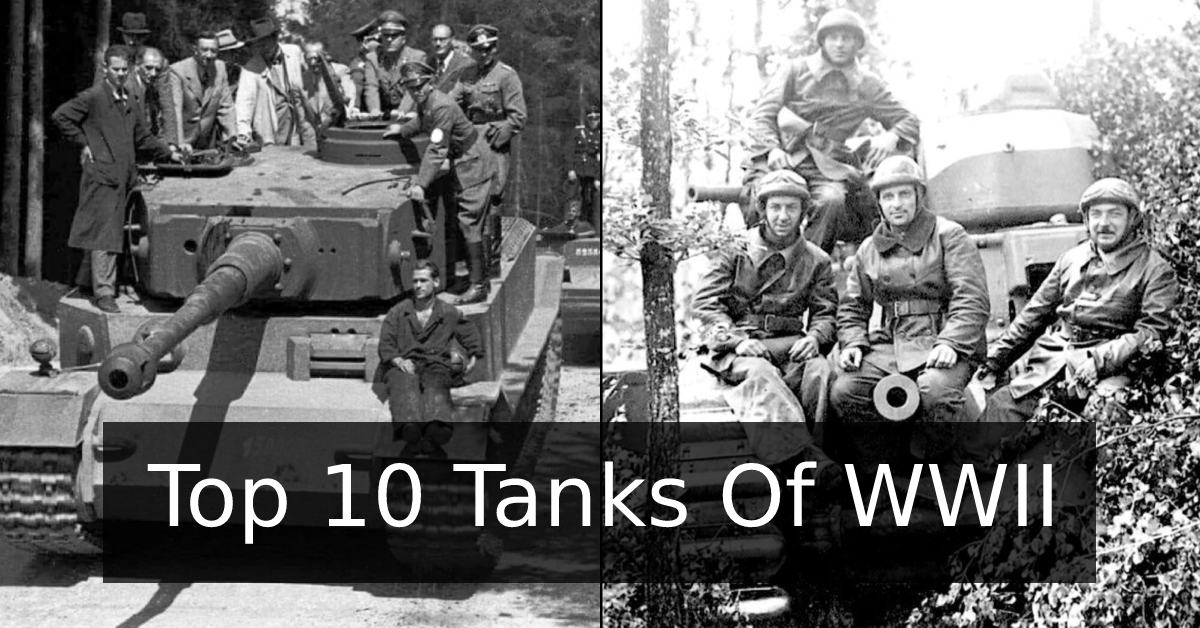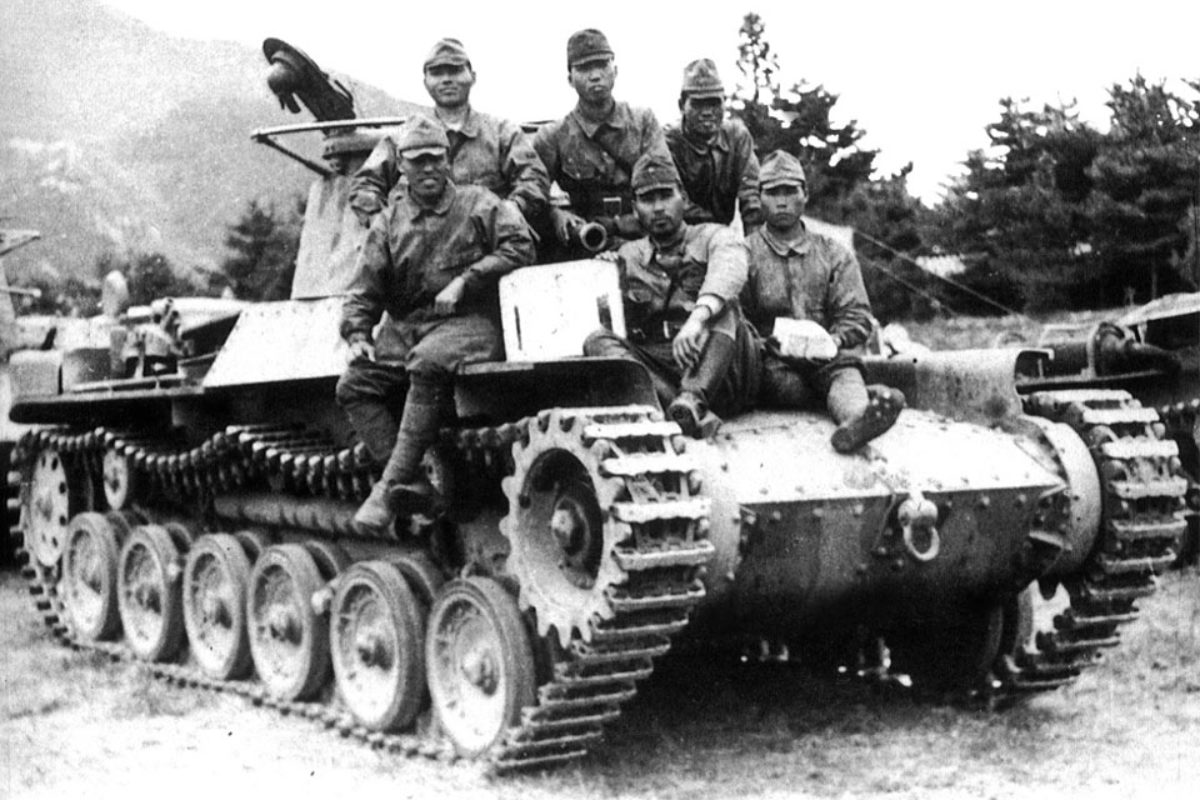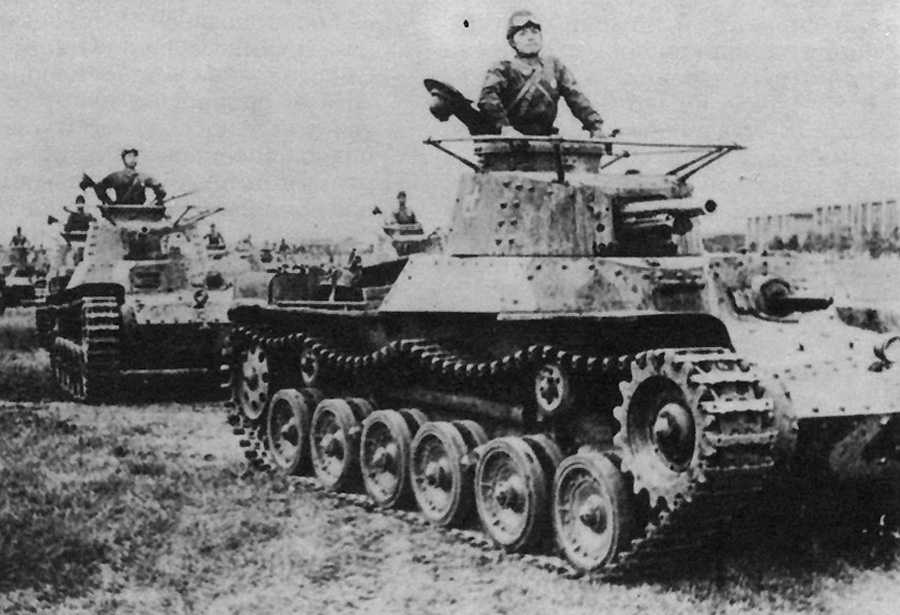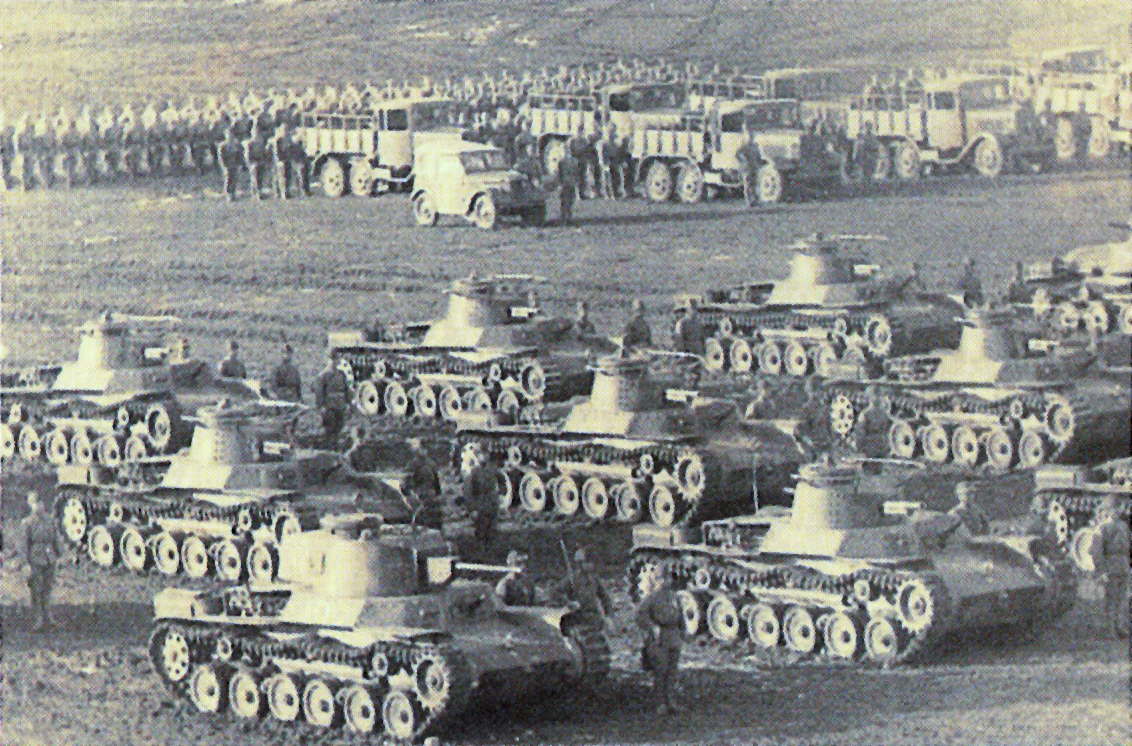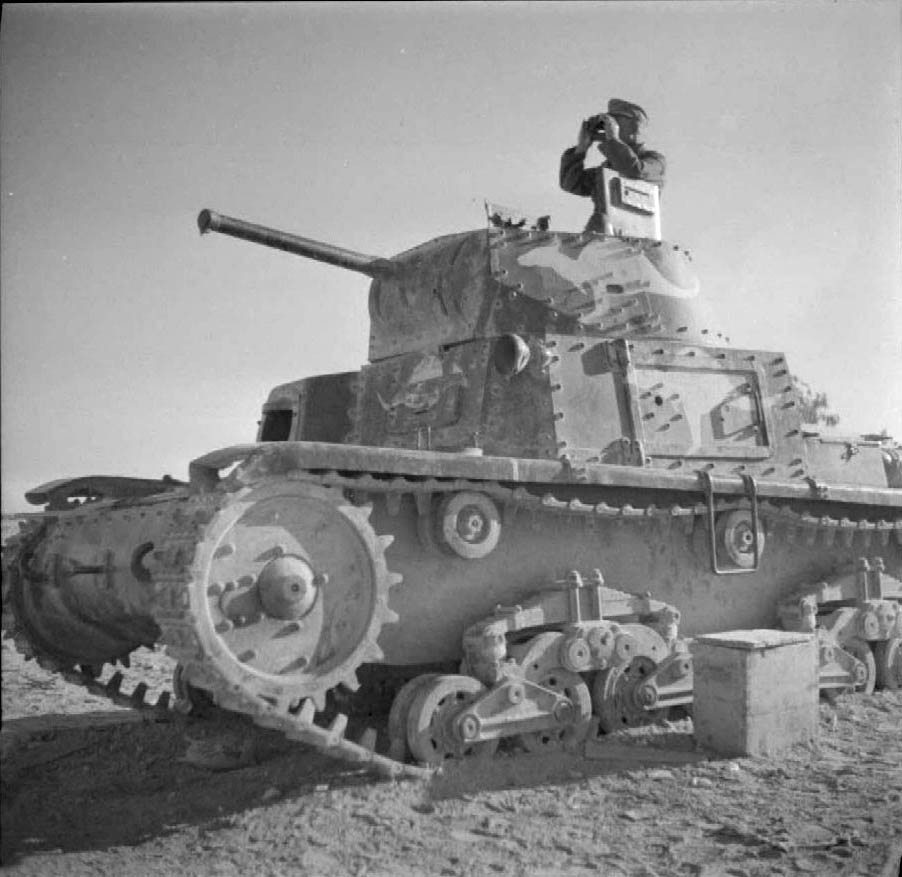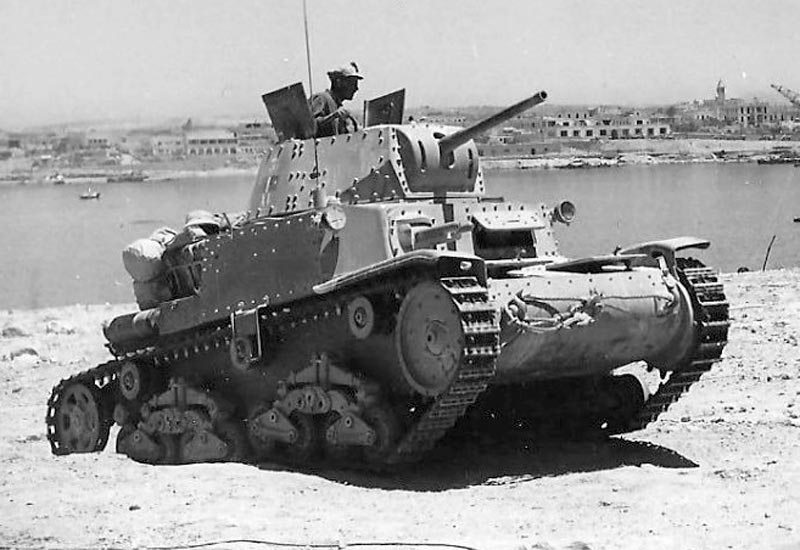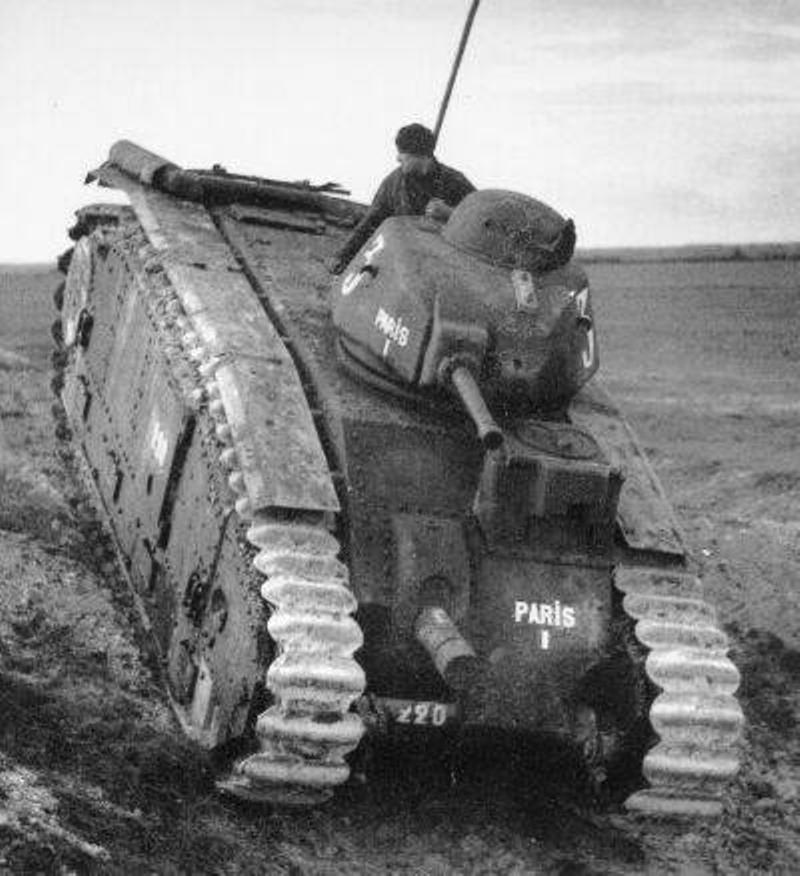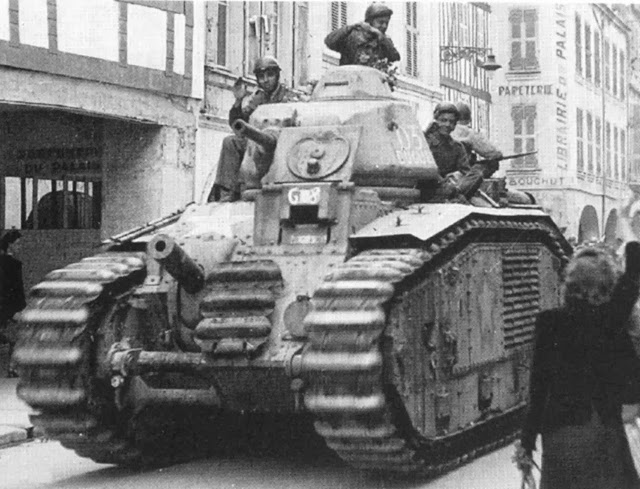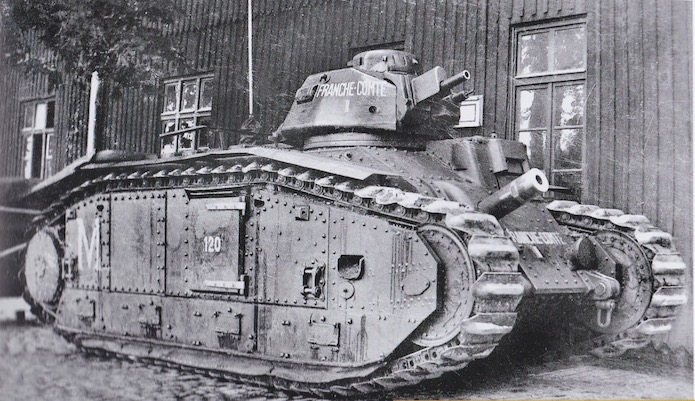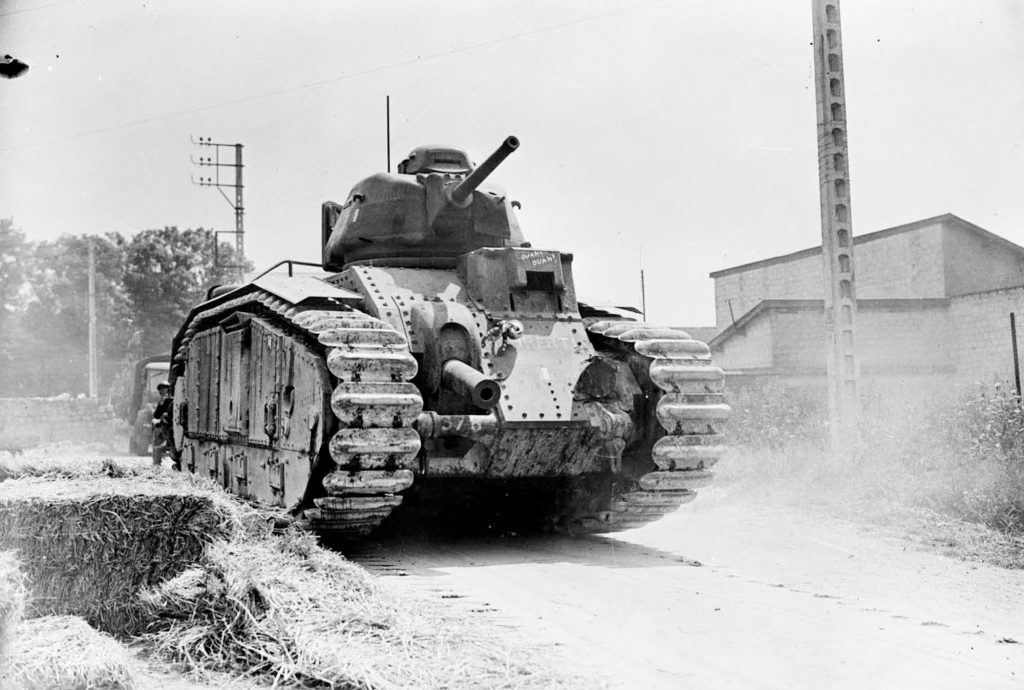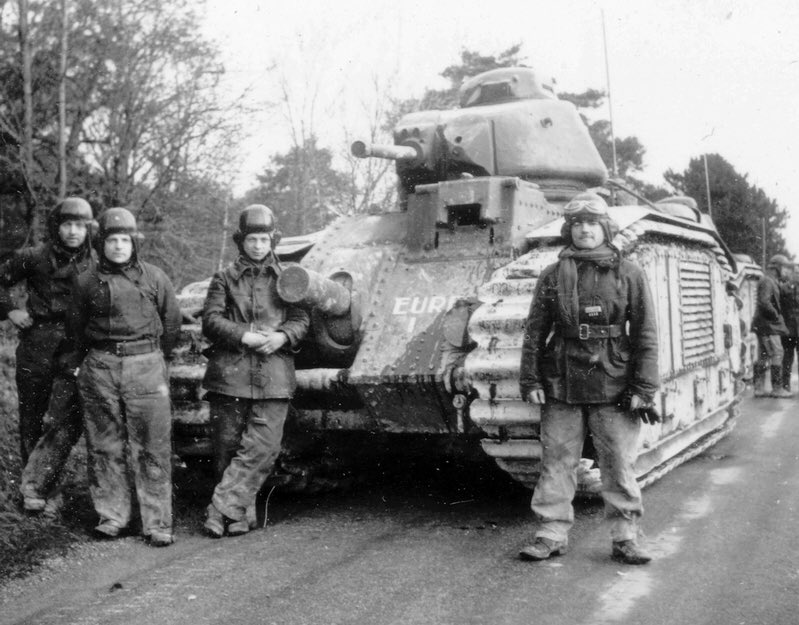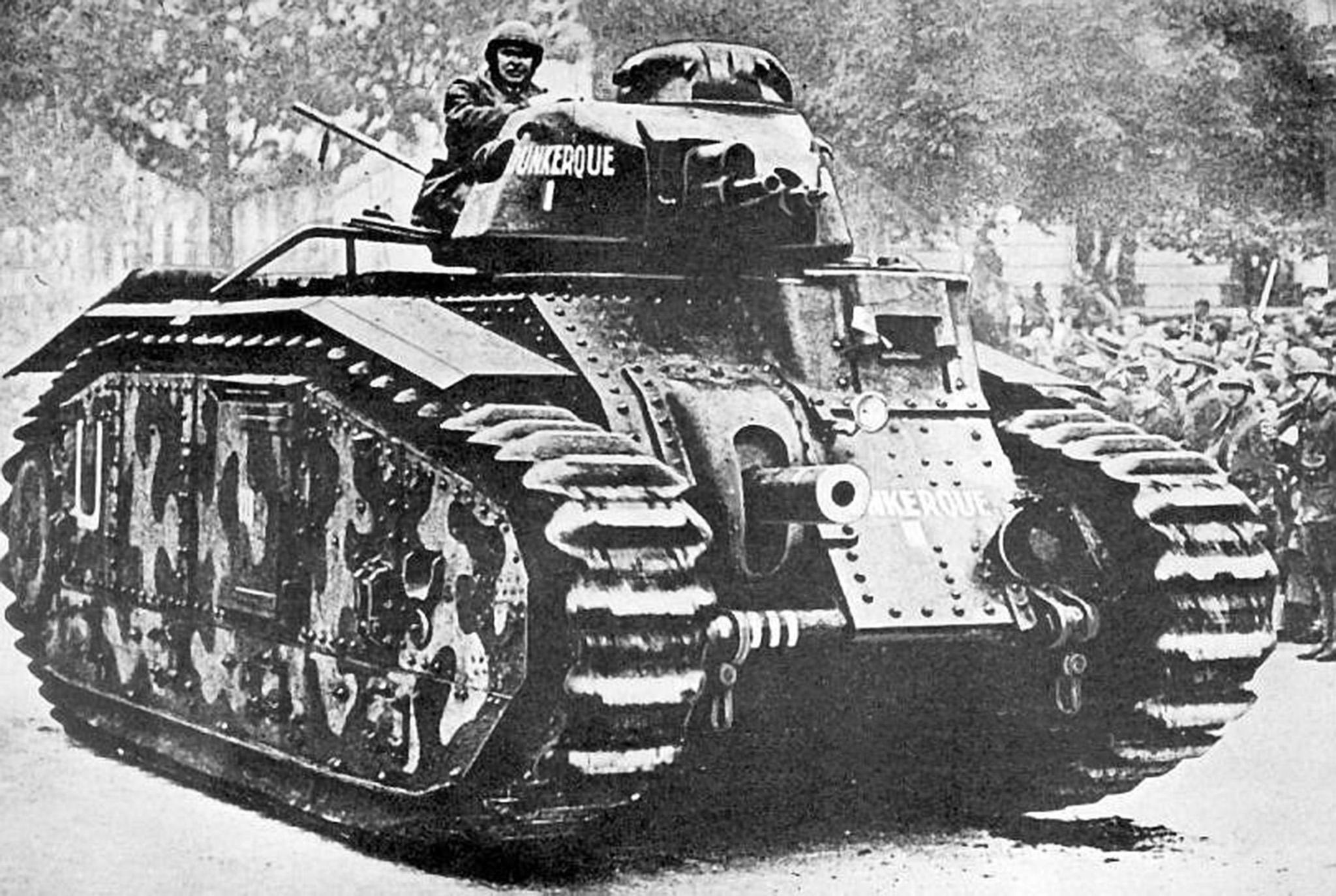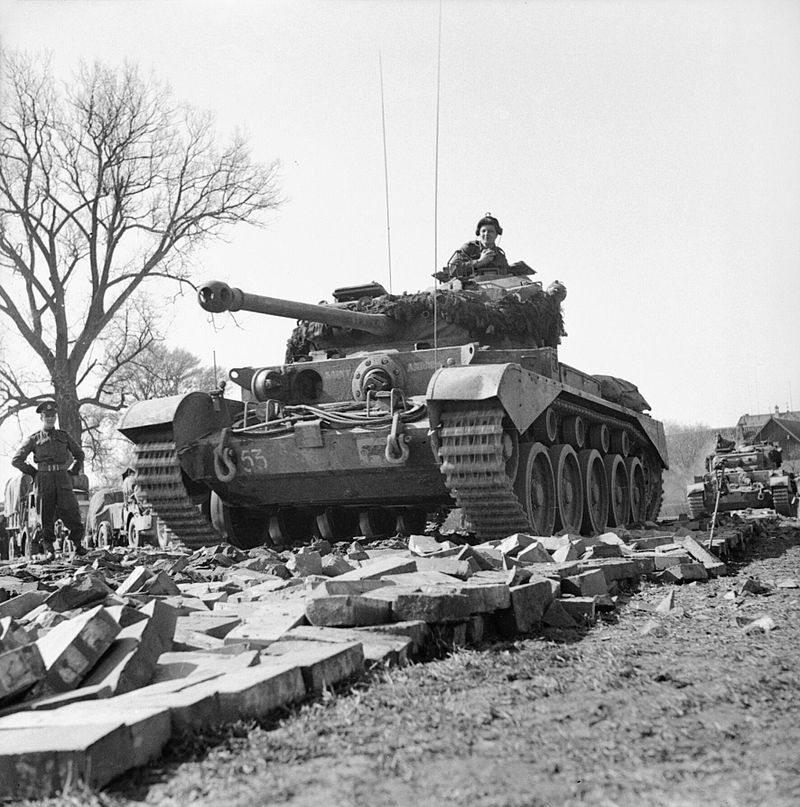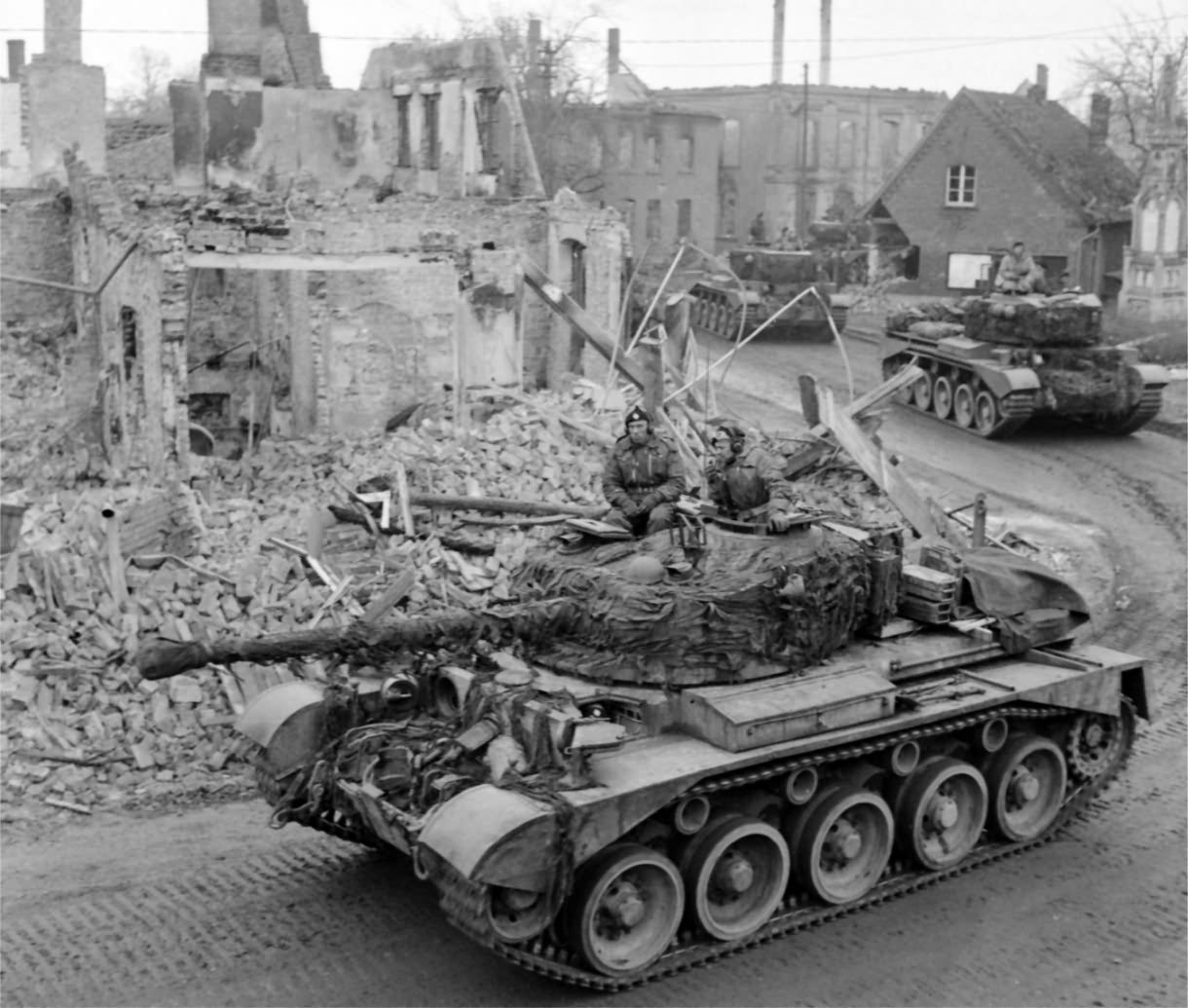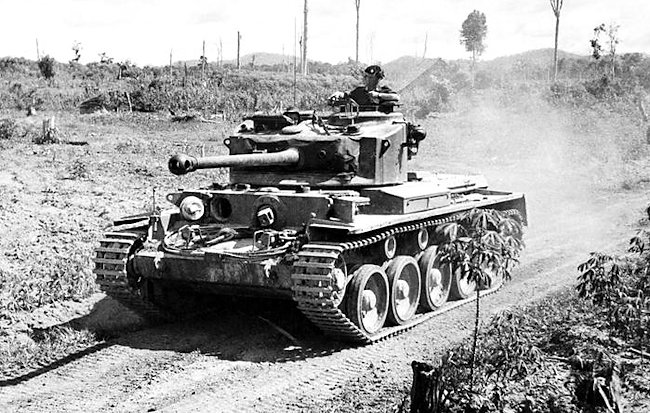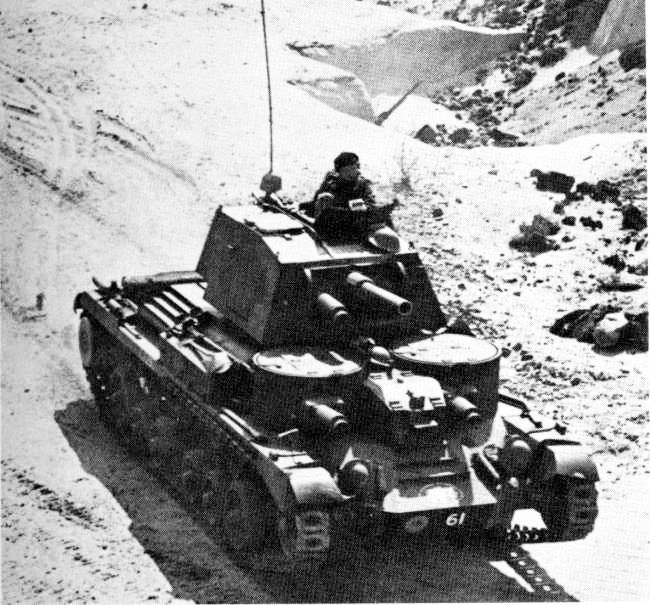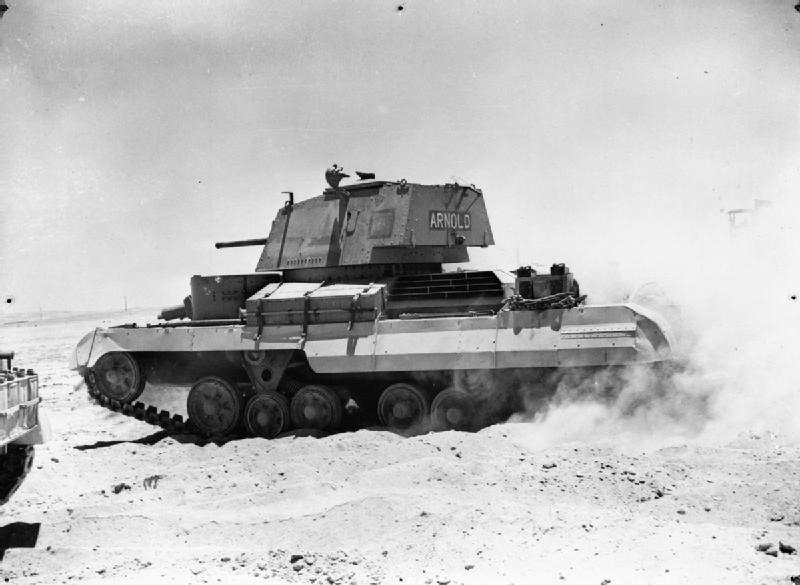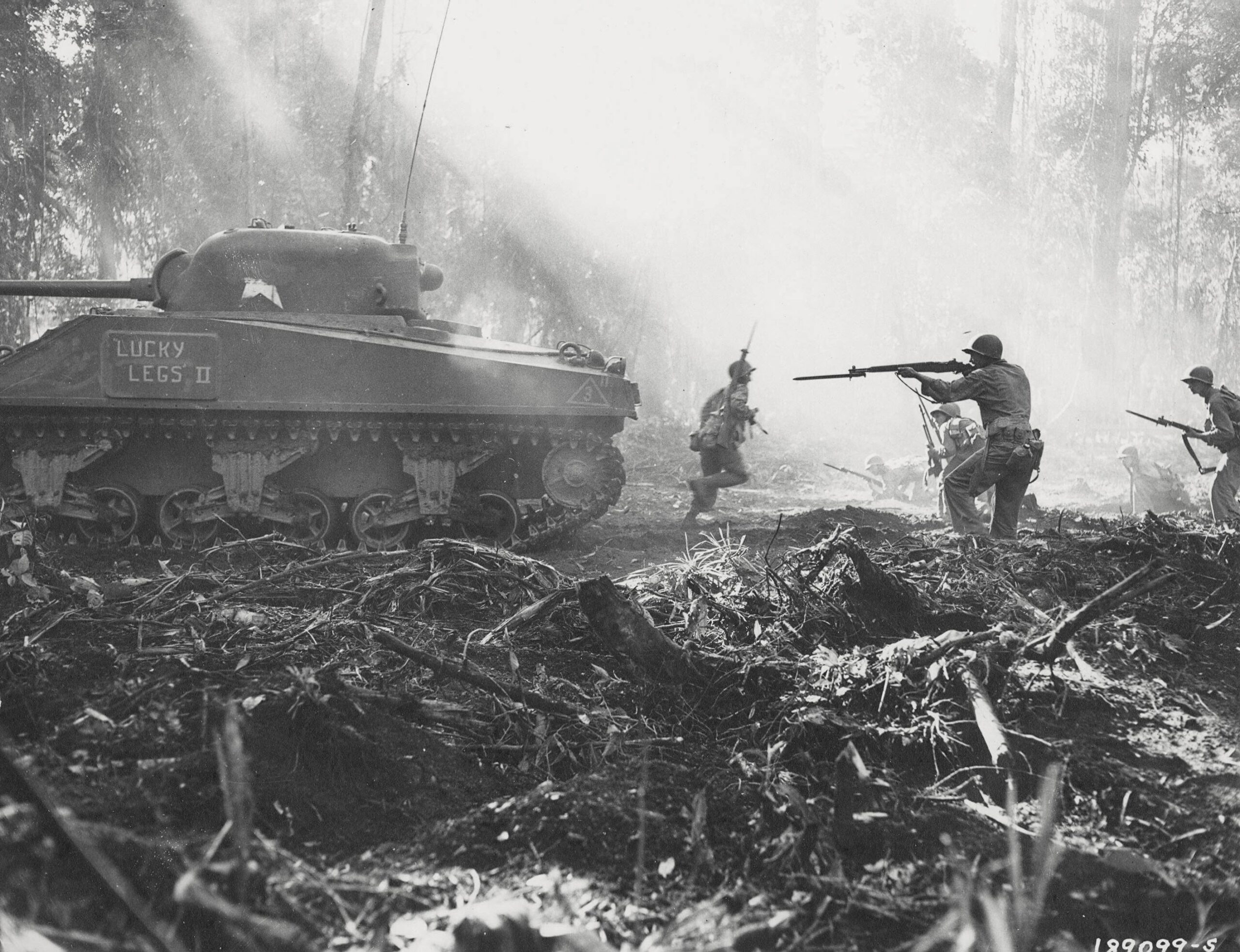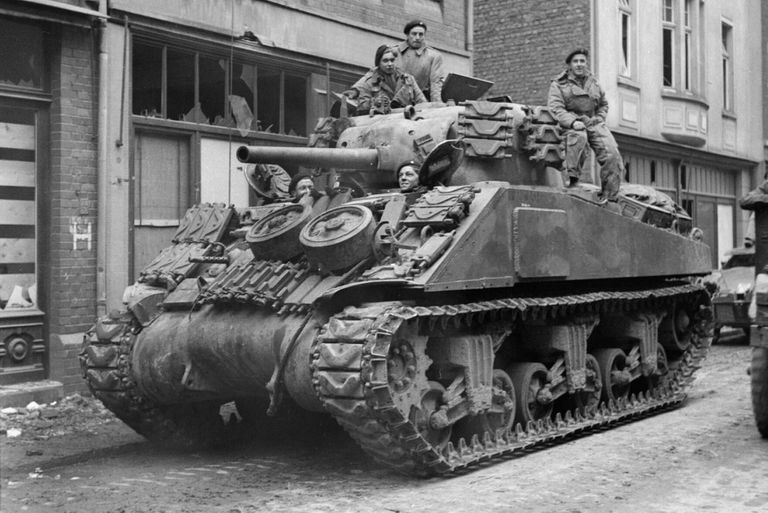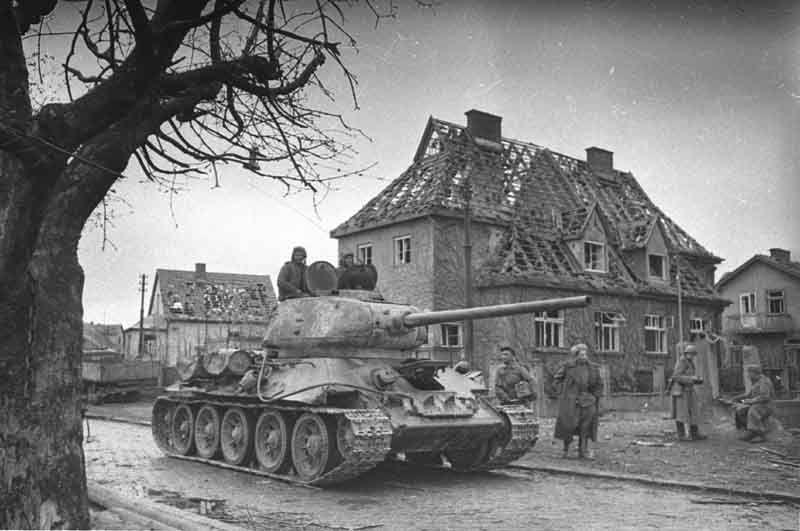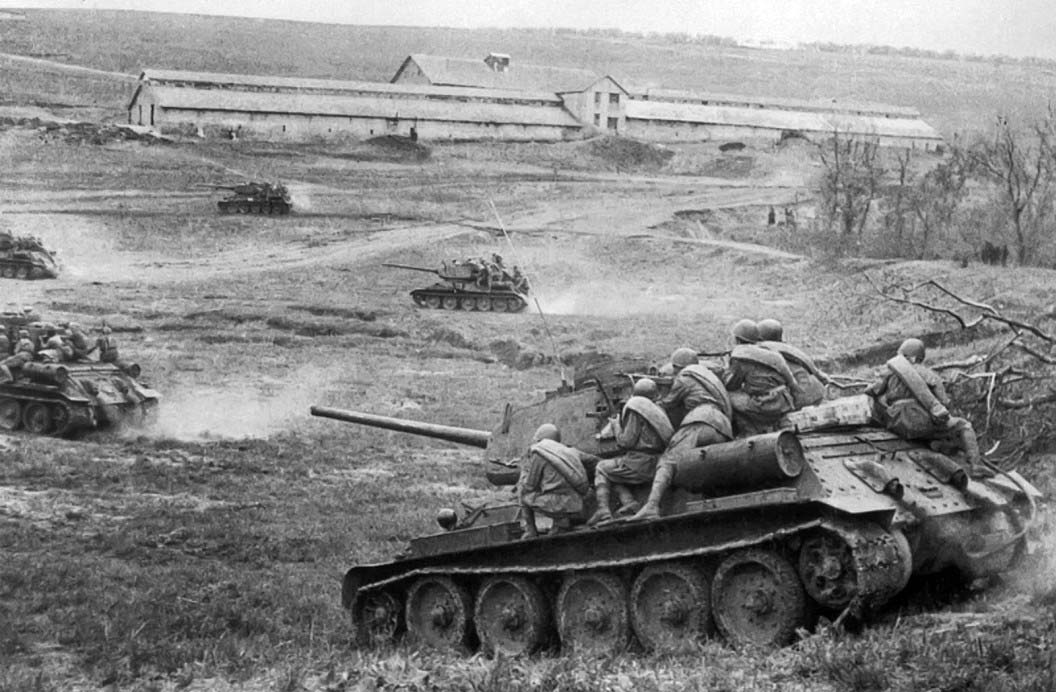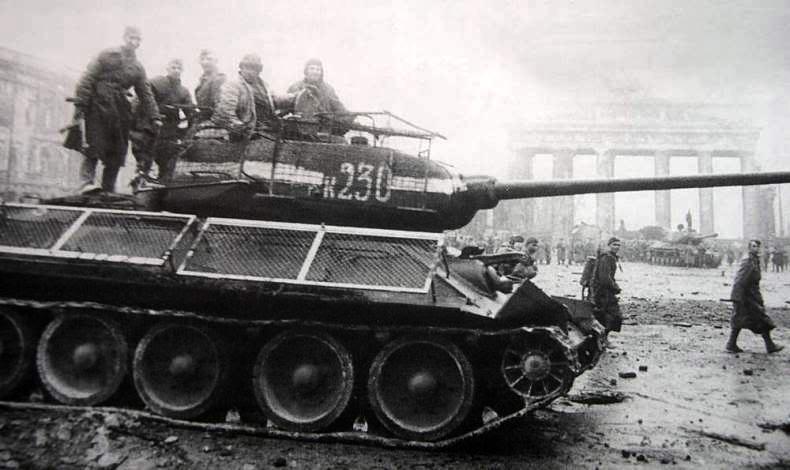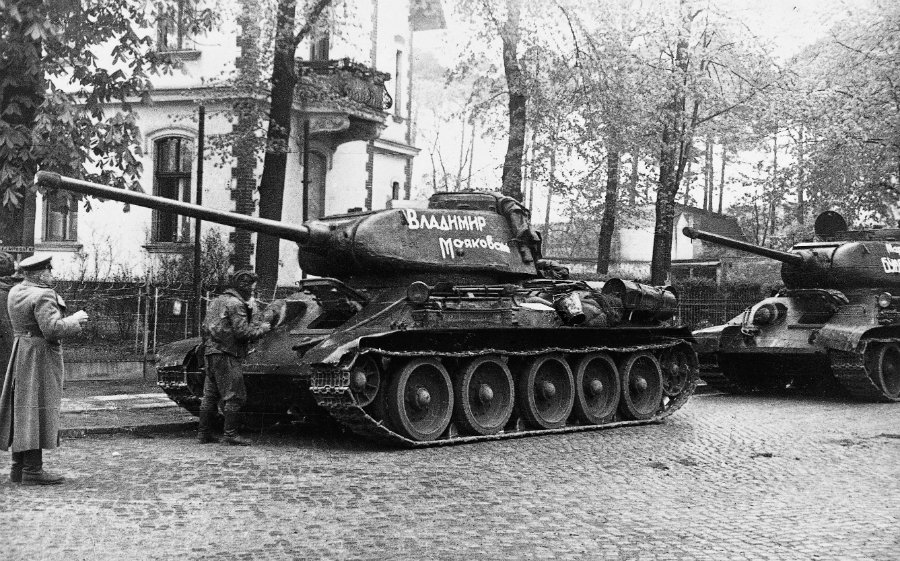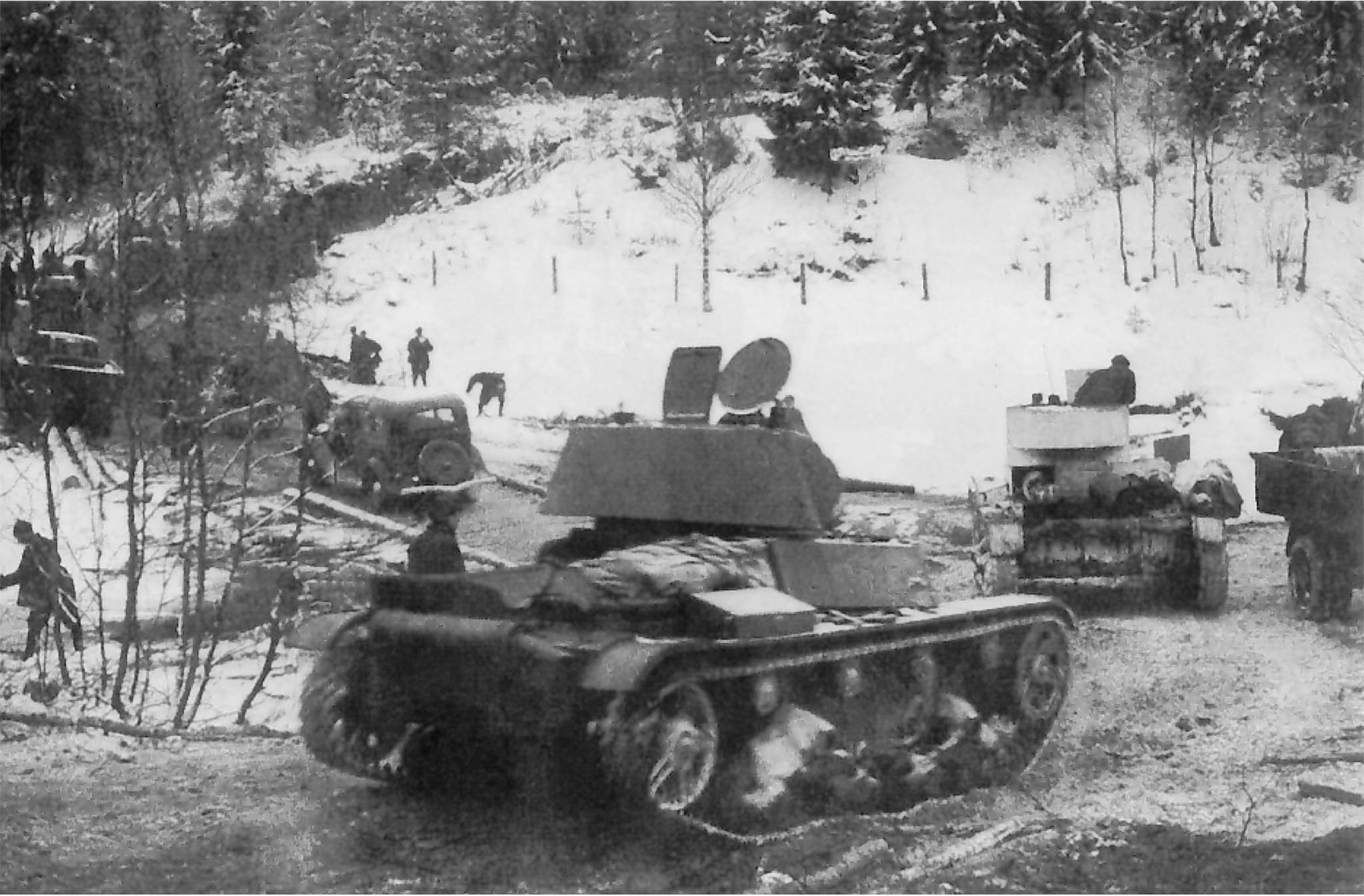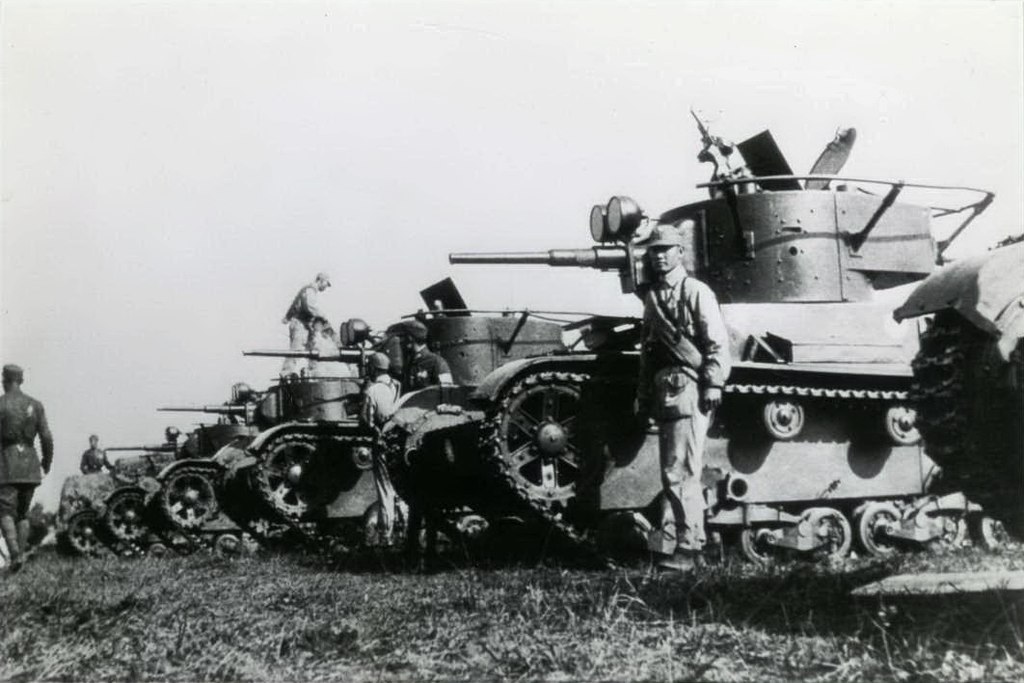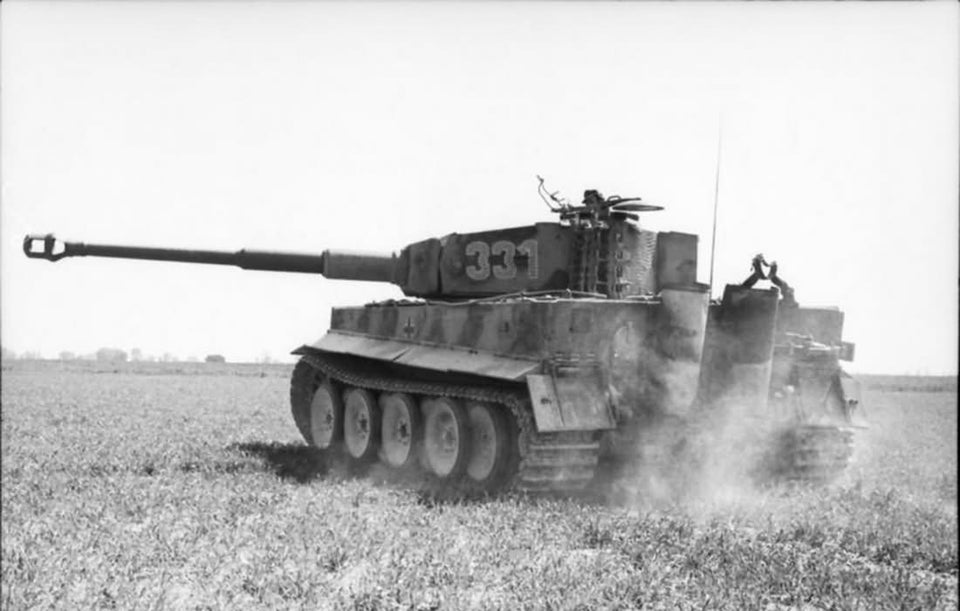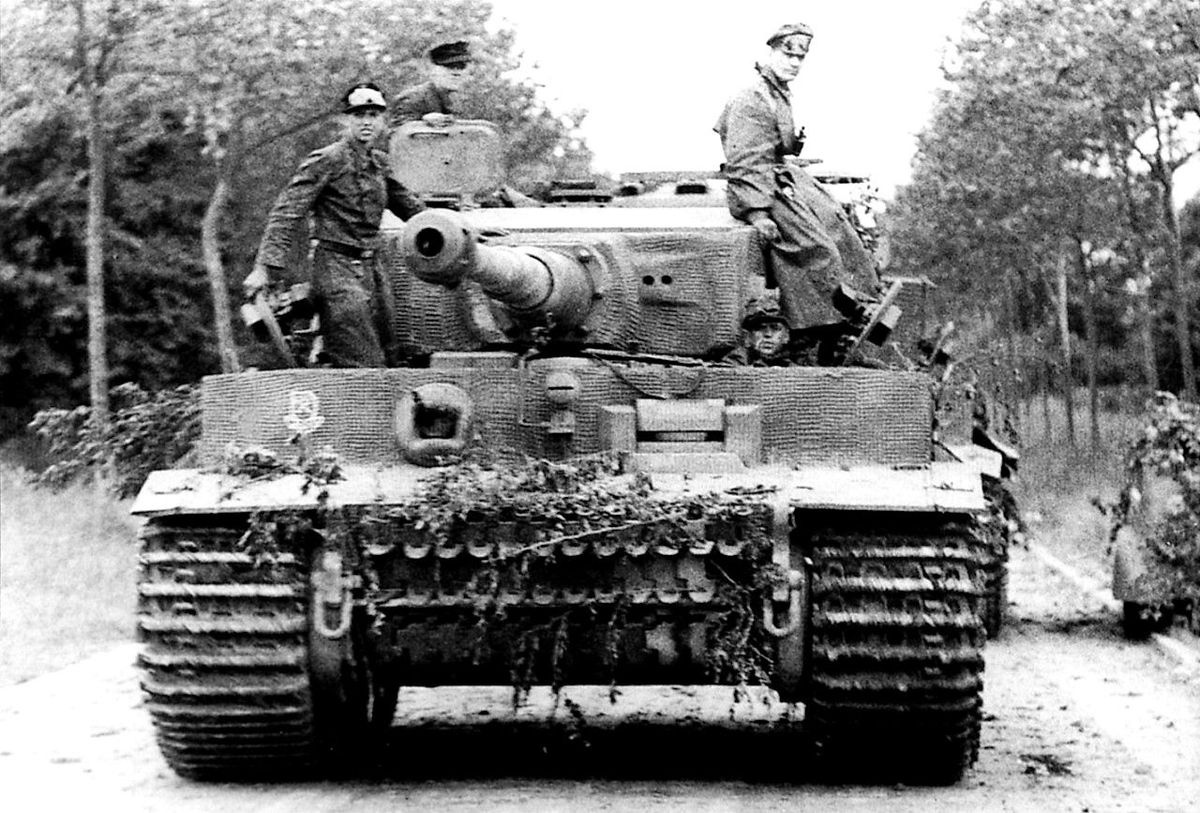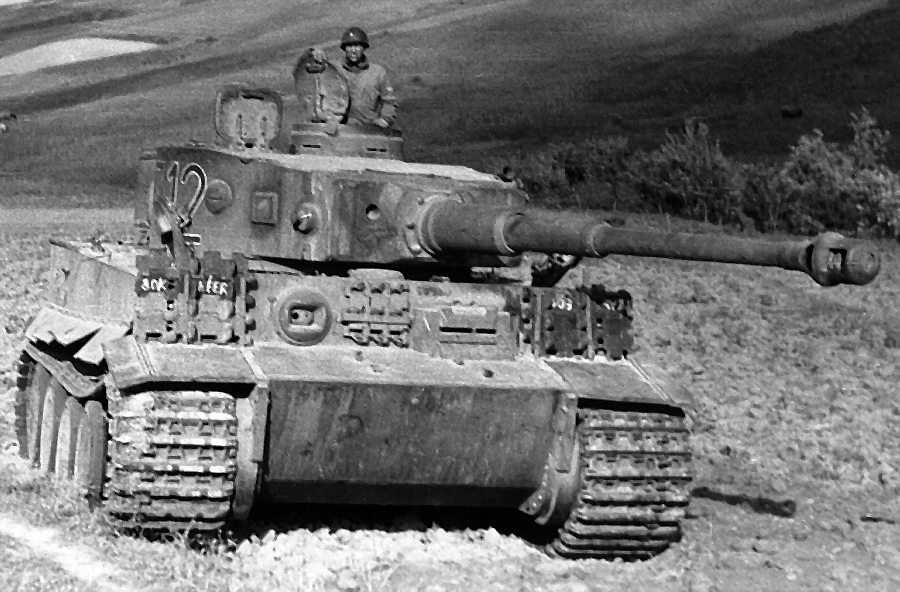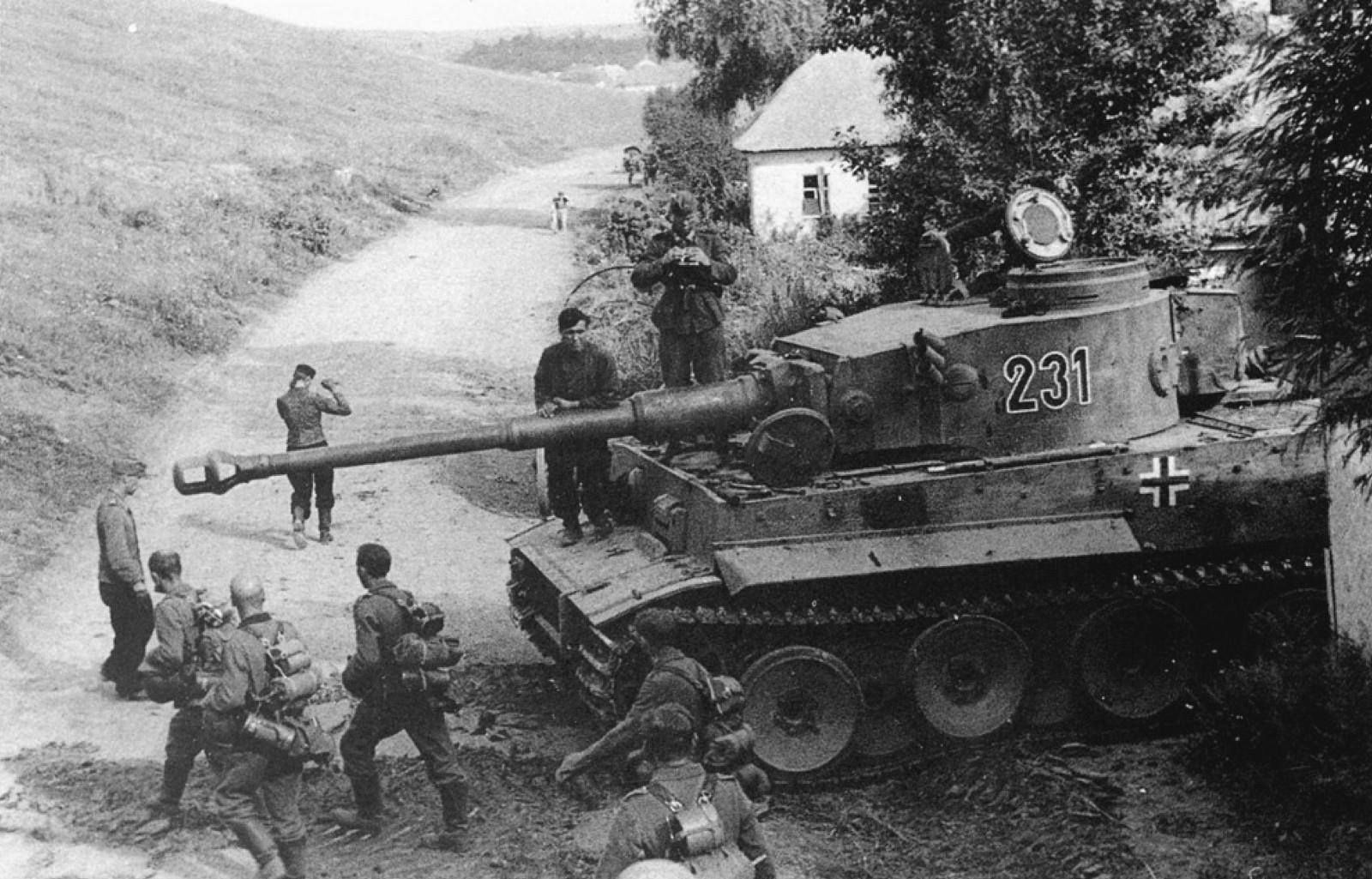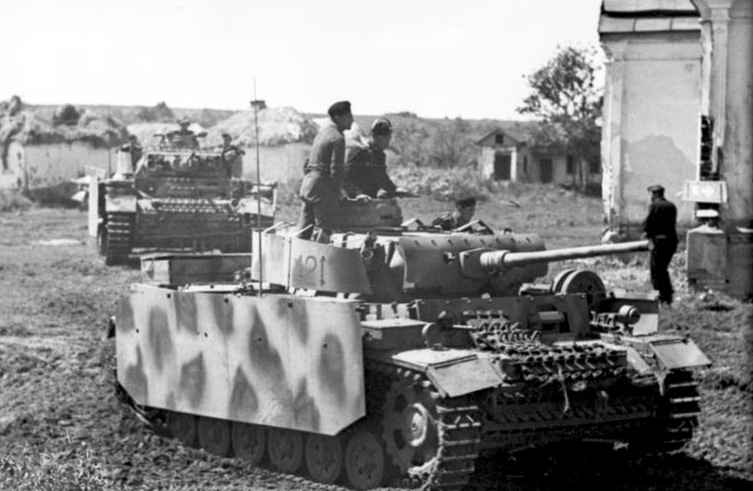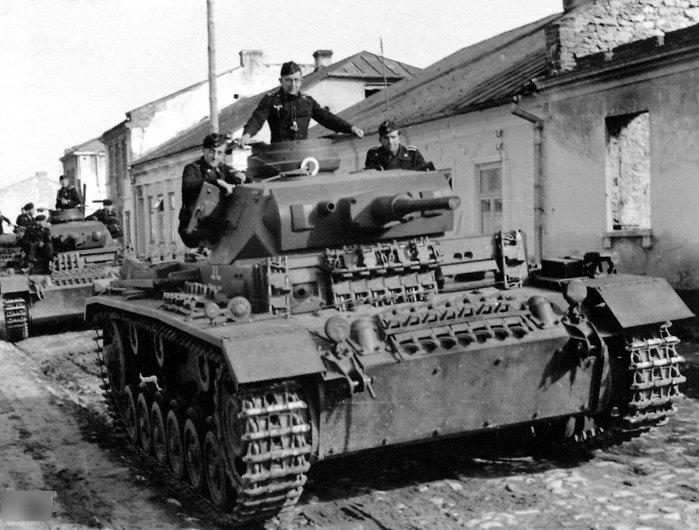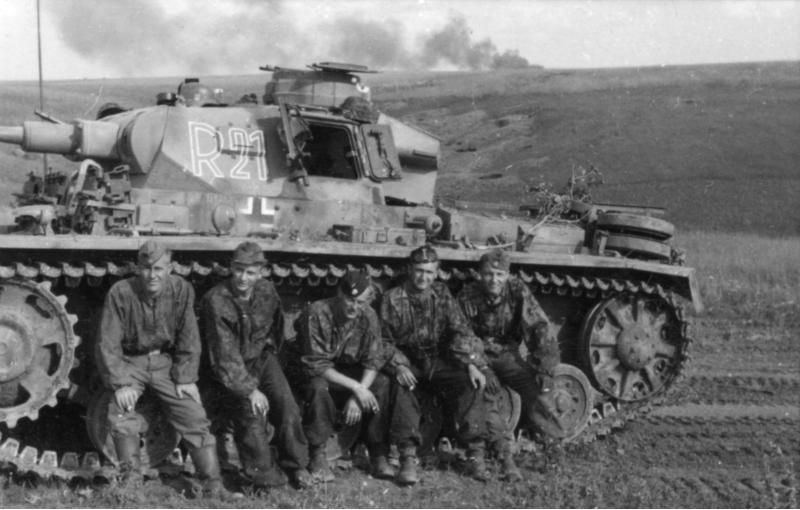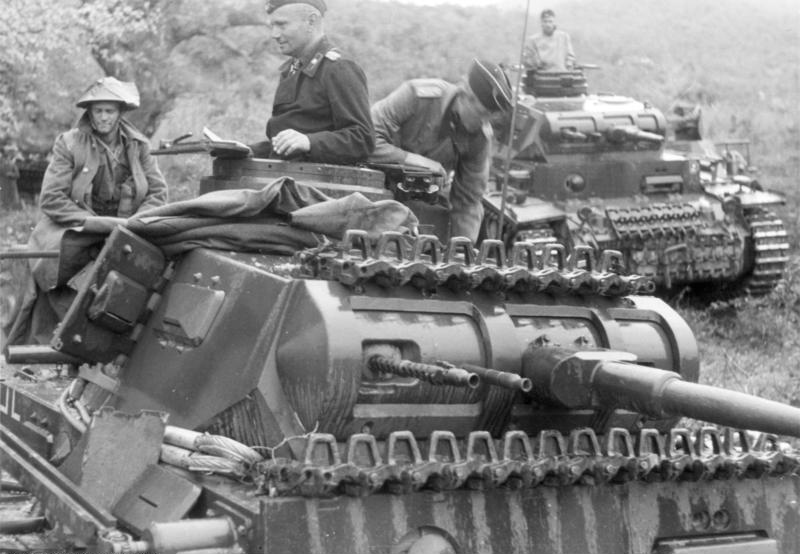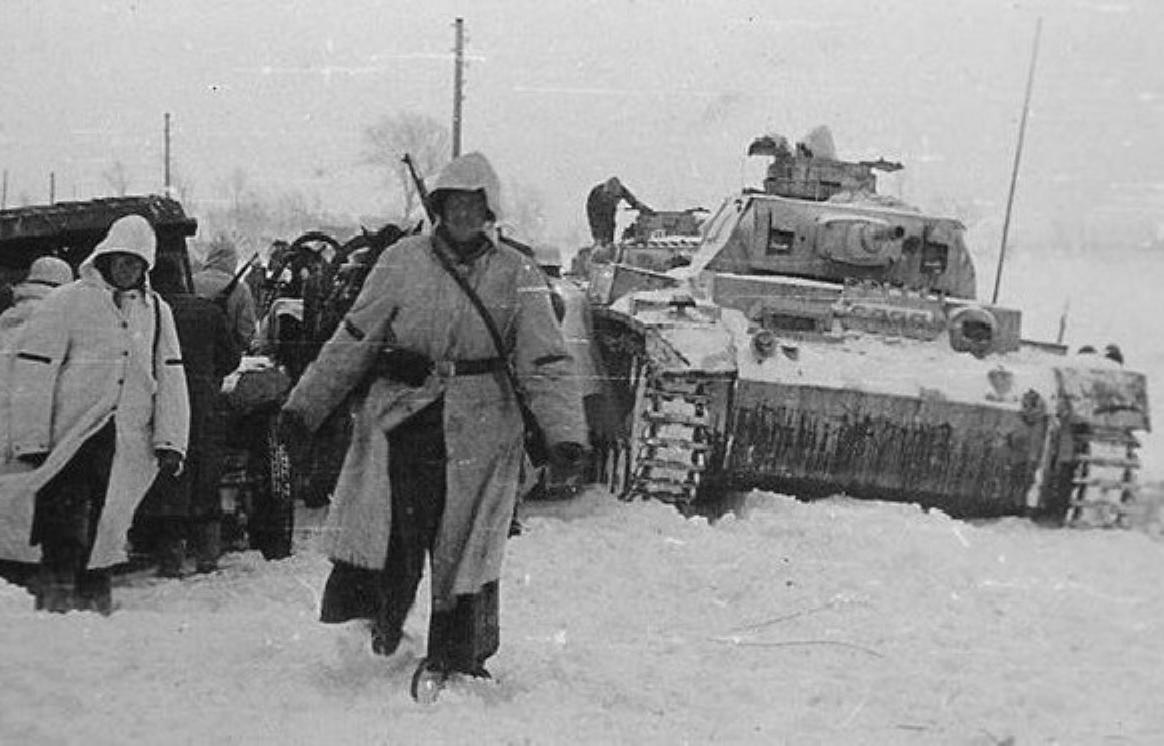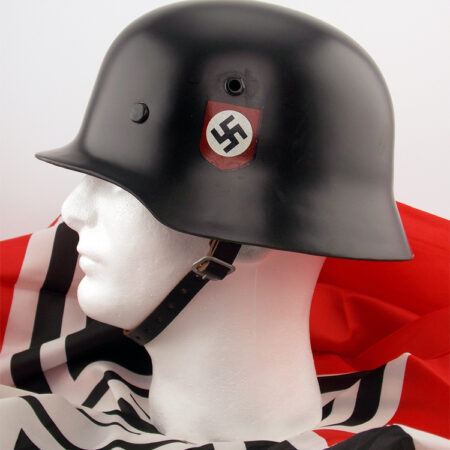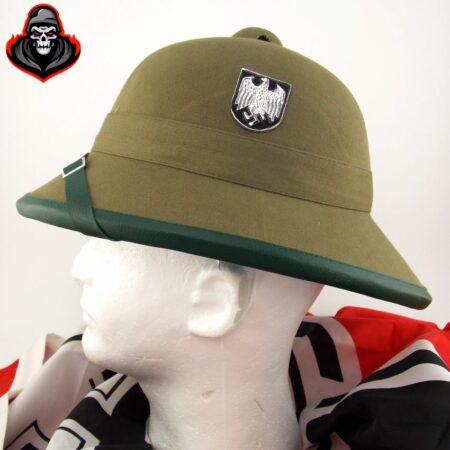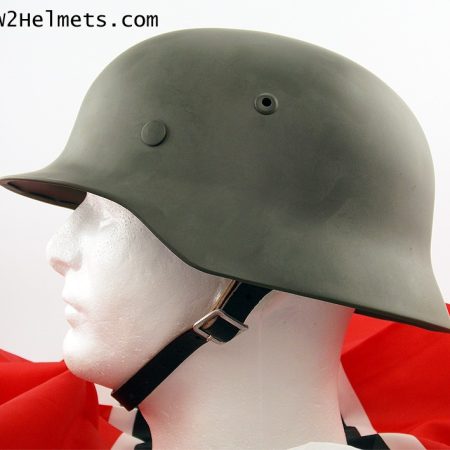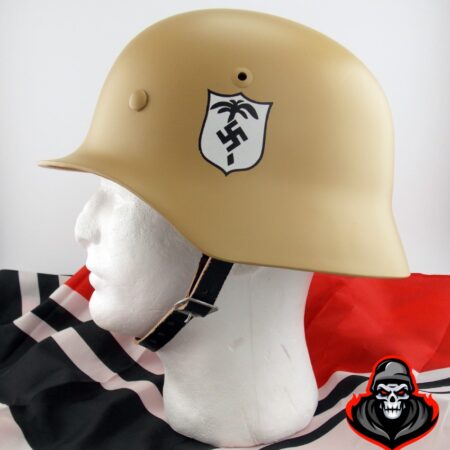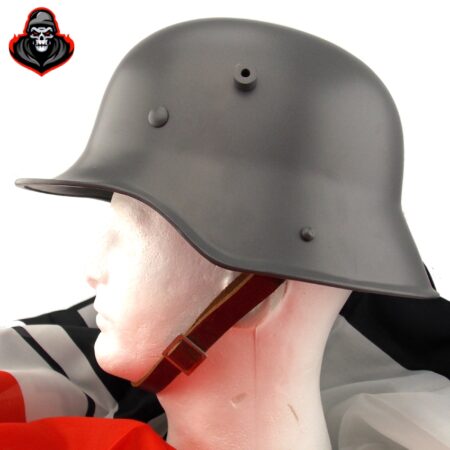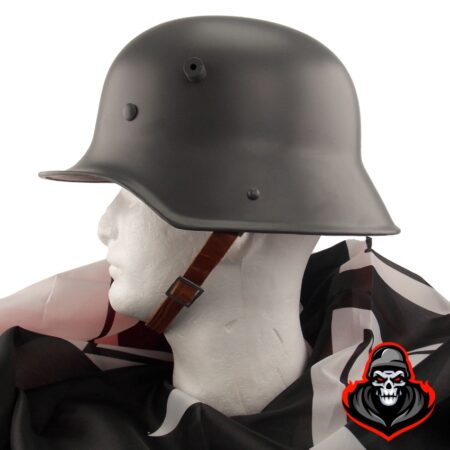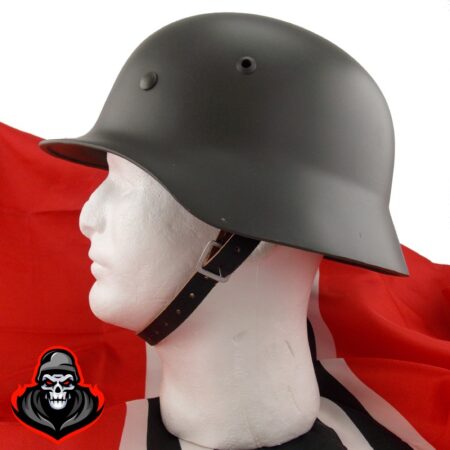The Second World War was in many ways the war of the tanks. While these heavily armored vehicles had first been developed and utilized during the First World War, and though they have been used ever since by armed forces, the Second World War was really epitomized by tank warfare, in the same way which the helicopter is so intrinsically central to the Vietnam War. The clearest indication of this is that the biggest tank battle of all time, the Battle of Kursk, took place at the height of the war on the Eastern Front in Russia in the late summer of 1943. Here we provide details of ten of the most iconic and significant tank models employed by both the Allies and the Axis Powers during the course of the six year conflict.
#10: Japanese Type 97 Chi-Ha Medium Tank
The Japanese Type 97 Chi-Ha was a medium tank which was employed by the Japanese Imperial Army throughout the Second World War and was the most widely employed tank by the Empire of Japan during the conflict. Indeed its operational use pre-dated the outbreak of the global war and the Chi-Ha had been employed from the early stages of the Second Sino-Japanese War which broke out between Japan and China in 1937. The Chi-Ha was developed by Mitsubishi and was eventually fitted with a 57mm tank gun and two machine-gun turrets, while it was crewed by four people, though it was admittedly a rather slow tank reaching speed of just 38 kilometers per hour. The tank had a rather unusual design, with a semi-circular radio antenna on the top, and a low silhouette making it more distinguishable than many other tanks produced by the Allies and the Axis during the war. Eventually over 2,000 units of the Type 97 Chi-Ha were constructed by the Japanese, a rather extraordinary figure for use in the Pacific War, which was otherwise so overwhelmingly focused on naval and air warfare. As such it was easily the most widely used Japanese tank of the entire war.
#9: Italian Carro Armato M13/40
The Carro Armato M13/40 was the most widely used Italian medium tank of the Second World War. In the course of the conflict it became a common sight in certain theatres of the war, notably the Balkans and North Africa. The specifications for the tank were originally developed in 1937. It was fitted with a turret wide enough to hold a 47mm Breda, an excellent anti-tank gun, as well as two mounted machine-gun turrets. However, the Carro Armato M13/40 had a number of weaknesses. While it was a relatively fast tank with good firepower, it had considerable deficits in terms of its amour, which was not as substantial as other models such as the Panzers of Italy’s German allies. In order to circumnavigate this problem many Italian units began mounting additional sandbags on the sides of the Carro Armato in North Africa, however this in turn created extra strain on the engine of the tank which could often break down as a result in the sands of the Sahara. However, military historians have suggested that the greatest impediment faced by the Carro Armato as Italy’s foremost tank type actually lay in the insufficient training of its crews, rather than any defects in the tank itself. So widely deployed was the Carro Armato that many units were still operational in 1945 and continued to be used in certain theatres in the post-war period right down to the early 1970s.
#8: French Char B1
Although the French were quickly defeated on mainland Europe in the summer of 1940, they nevertheless produced one of the most iconic and significant tanks of the entire war. This was the Char B1, a heavy tank, the origins of which lay in French tank production as early as 1919, just after the end of the First World War. Years of further development and innovation led to the Char B1, which was in production by 1936. The name is derived from Char de Bataille, or Battle Tank. This was a specialized tank which was centered on a 47mm gun turret at the very top which was fully traversing and could fire in any direction once rotated. The suspension of the vehicle was also very complex, with sixteen road wheels on each side of the tank. The look of the tank was quite old-fashioned, harking back to the First World War, a product of its long development over nearly twenty years from 1919 onwards. At the outset of the war in 1939 the Char B1 was one of the most powerful tanks ever built, both in terms of its armour and also its firepower. However, it had a fatal weakness, specifically its relatively slow speed by comparison with German Panzer tanks being deployed by the Nazis in 1939 and during the Battle of France in 1940. It also had a high fuel consumption, which made the Char B1 a poor rival to the Panzer when the Blitzkrieg or Lightning War was deployed across northern France in the summer of 1940. Nevertheless the model was appreciated enough that when France was conquered many of the Char B1s were repurposed by Germany as flamethrower tanks.
#7: British A34 Comet
Some tanks were developed in the course of the Second World War which had capabilities which meant their utility long outlasted the conflict itself. One such was the British A34 Comet, a cruiser tank which was developed in 1943 by Leyland Motors. This adopted the best elements of the cruiser-type tanks which had evolved between 1939 and 1943. It had superior firepower compared with most earlier cruisers, with a 76mm tank gun and two machine gun turrets. This combined with its max speed in excess of 50 kilometers per hour made it a considerable swift movement tank. It was used extensively in the invasion of France following the D-Day landings in the summer of 1944. With its ability to penetrate the armour of the German Panzer and Tiger tanks it proved extremely effective in the year that followed on the road to Berlin, particularly as it could move swiftly across the continent when in-tact roads could be travelled along, notably the German autobahn. Such was the advanced specifications of the A34 Comet that it continued to be utilized by British armed forces and others long after the war, until the end of the 1950s.
#6: British Cruiser Mk I
Britain’s preparations for war with Germany could be said to have been belated in the late 1930s. For years the Prime Minister, Neville Chamberlain, and his government believed they could appease Adolf Hitler and Nazi Germany in their growing demands for every greater control over Central Europe. As such when the Second World War eventually did erupt fully in September 1939, Britain was unprepared in many ways. But it did have a formidable army in many senses which was able to contribute to the Expeditionary Force which was sent to France from the autumn of 1939 onwards in anticipation of a German invasion of Western Europe. Foremost amongst its tank divisions was the British Cruiser Mk I, a light tank which was the first mass-produced ‘cruiser’ tank, one which could move swiftly along the front to engage the enemy. In this the Crusier Mk I was quite successful for its time, reaching speeds of over 40 kilometers per hour. However, it was effectively a reconnaissance tank owing to its relatively weak armor and limited firepower. Therefore, while the Cruiser Mk I was used in both France and then on the North African front it was soon replaced by heavier models with greater firepower. Indeed the Cruiser Mk I is a good example of how technological developments dramatically expanded as the war proceeded. By 1942 even many heavy tank models were able to travel at similar speeds to the Cruiser while utilizing far greater firepower and being much more heavily armored.
#5: American M4 Sherman Tank
Few tanks are as central to our impression of tank warfare during the Second World War as is the American M4 Sherman tank, the most widely produced tank deployed by the United States during the conflict. Fitted with a 75mm gun and two machine gun turrets, it was able to wield one of the largest amounts of firepower of any mass produced tank made during the war. It was crewed by five and had relatively good speeds for its weight of up to 48 kilometers on road and other good surfaces, thus making it an effective all-rounder. The Sherman was being produced and sold to the Allies through the Land Lease Program before the US ever entered the Second World War itself in the aftermath of the Attack on Pearl Harbor. After America did enter the war its production expanded exponentially and factories to produce the tanks were even established overseas, notably in North Africa to provide tanks for the opening of the Southern Front in Sicily in 1943. As a result the Sherman became the most widely employed tank used by the Allies in Europe in the last two to three years of the war. It remained a key part of America’s tank divisions for many years after the war, notably in Korea, and by the time it was decommissioned in the late 1970s an astonishing 49,324 Sherman M4s had been produced, making it the most extensively produced tank in American history.
#4: Russian T-34
In response to the deficiencies in tanks such as the T-26 the Soviet Union quickly began producing more advanced models in the early stages of the Second World War. None was as significant as the T-34, a medium tank which was introduced in 1940. With a 76mm tank gun and two machine gun turrets it had heavier than average firepower than most tanks which were mass-produced during the war, while its armour was also better than average for a medium tank which could reach speeds of over 50 kilometers per hour. The T-34 was usually crewed by four individuals, though often five in more advanced later models which were produced towards the end of the war. Its bearing on the course of the war cannot be under-estimated. When it first began to be deployed in large numbers in the winter of 1941, and in particular during 1942, the war result was still in the balance, but by the time it became the most ubiquitous tank on the Eastern Front in 1943 the Russians were beginning their gradual assault on the Germans which would not stop until they reached Berlin in the spring of 1945. Part of the reason for the Russians’ success against the Germans during these middle years of the war was simply that the T-34 was technologically superior to the German Panzer tanks then in use in almost every single way. The famed German tank marshal, Heinz Guderian, whose tactical employment of the Panzer divisions was so central to the Blitzkrieg of 1939 and 1940, admitted himself that the T-34 was superior in almost every way to the tanks the Germans were utilizing on the Eastern Front. So powerful was the T-34 and ahead of its time that it continued in use, in one form or another, down to the early 1980s. Eventually over 80,000 units were produced, making it arguably the most significant tank ever developed.
#3: Russian T-26
Many of the tanks which were employed by both the Allies and the Axis Powers during the early years of the Second World War were essentially legacy tanks, armored vehicles which had been developed during the inter-war period and often used to great effect, but which quickly became obsolete as the global conflict proceeded. None was as symptomatic of this as the Russian T-26 tank. This was a light tank which was developed by the Soviet Union in the early 1930s, based largely on the British Vickers 6-Ton tank. Fitted with a 45mm tank-gun and a machine gun turret, crewed by three men and with a maximum speed of about 32 kilometers per hour on good surfaces, it was an advanced tank for its time. Accordingly, the T-26 was used extensively during several conflicts during the 1930s, including the Spanish Civil War between 1936 and 1939 and the Russian conquest of Finland. It was produced in highly large numbers, over 10,000 units being produced, and it is no surprise to find that it was absolutely critical to the Russian war effort in 1941 and 1942 following the German invasion of the Soviet Union with Operation Barbarossa. Yet, it was soon realized that it could not stand up to the superior firepower and defensive capabilities of the German Panzer tanks and in the course of the war on the Eastern Front it was quickly superseded by the T-34, the latter unquestionably being the most significant tank employed by the Russians during the Second World War.
#2: German Tiger I
In response to the Soviets’ development and employment of the T-34 on the Eastern Front, and its superiority over earlier models of the Panzer, the German High Command began work on a new Panzer model. The resulting tank, the Panzer VI, which is more typically known as the Tiger I, was deployed from 1942 through to 1945. This was the first German tank which employed an 8.8cm KwK 36 gun. This had a low velocity, heavy penetrative power and allowed the gunner a large amount of leeway when firing. Even an inaccurate gunner could typically hit targets. The Tiger I was largely designed by Ferdinand Porsche in combination with Krupps. It was the largest tank employed by the Germans during the war and first entered European combat in large numbers at the Battle of Kursk. Its frontal armour was also extremely effective at preventing any attacks by other anti-tank guns. However, it has also often been criticized as being ‘over-engineered’, principally because it required a very large amount of labor to produce a unit at a time when the Nazi regime’s logistical supplies and ability to produce war materiel was increasingly under pressure. As a consequence it was largely taken out of production in 1944, after just over 1,300 units had been constructed.
#1: German Panzer III
Few tanks are as ubiquitous in our image of the Second World War as the German Panzer III. The full name of the tank is the Panzerkampfwagen III, essentially meaning the third model of the Armored Combat Wagon or Vehicle. The Panzer III was the third in a series of tanks which bore the Panzer name, and which had been developed over time since the Nazis’ first ascent to power in 1933. However, the Panzer III was unquestionably the most significant model, largely based on design specifics put forward by General Heinz Guderian, the famed German tank commander. The Panzer III first entered service in 1939 and was central to the Blitzkrieg or Lightning War through which Nazi Germany conquered Poland, the Low Countries and France so quickly in 1939 and 1940. With its road speed of 40kms per hour and armed with a 37mm tank gun and several machine gun turrets these were the superweapon of the early stages of the war in Europe. It was crewed by five men, variously operating the gun turrets and acting as drivers and radio operators. However, while 1,500 Panzer IIIs were employed originally on the Eastern Front against Russia, they were soon outclassed by the Russian T-34 Tank. Thus, by 1943 production of the Panzer III had halted. Nevertheless, even by this point, over 5,600 units had been built, making the Panzer III one of the most widely utilized and significant tanks of the entire Second World War. It was gradually replaced in the last three years of the war by the Panzer IV, a heavier armored tank which had been in development since 1939 and which had thicker armor in order to be able deal with the increased firepower of the Soviet tanks.

